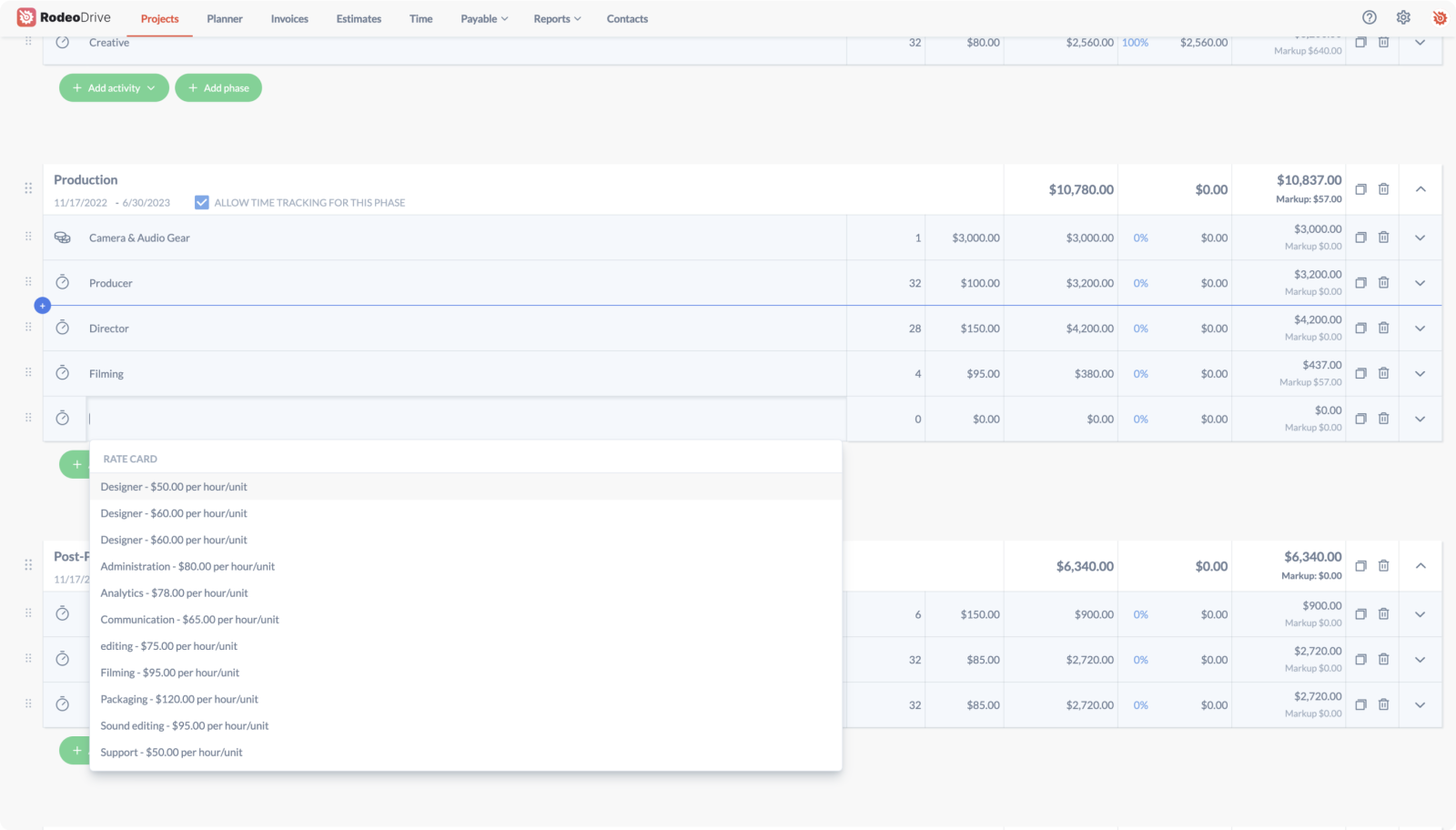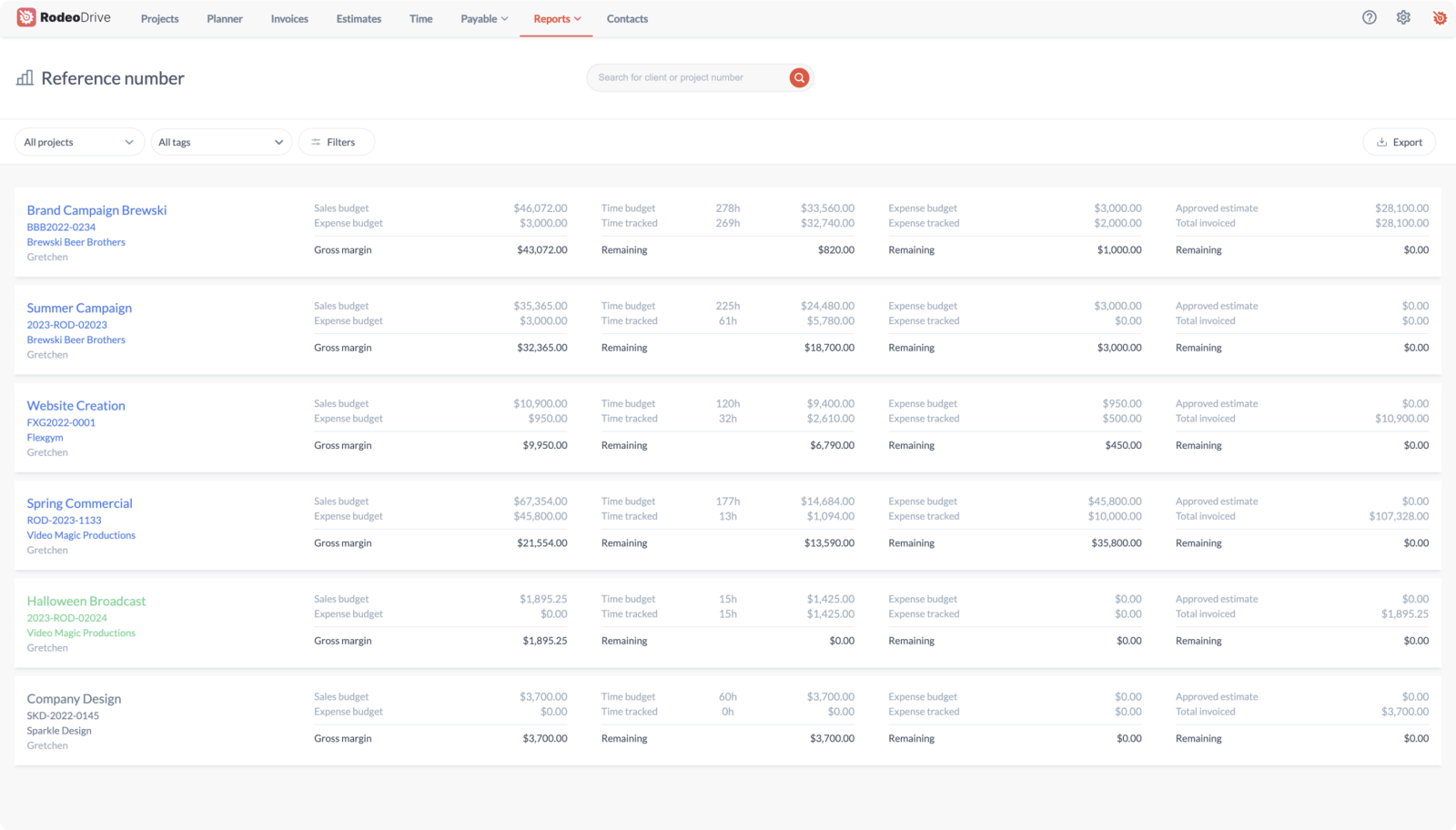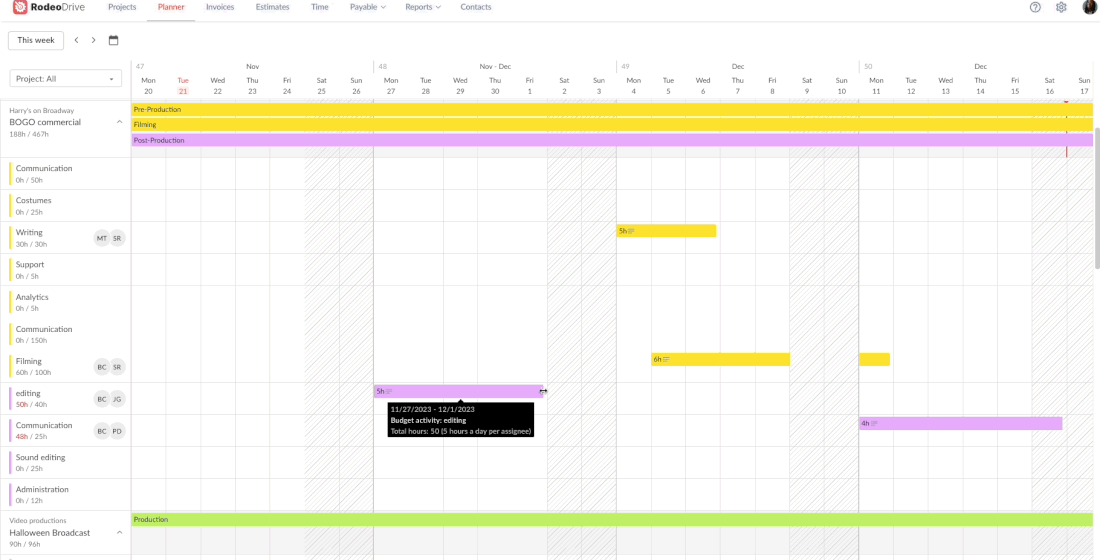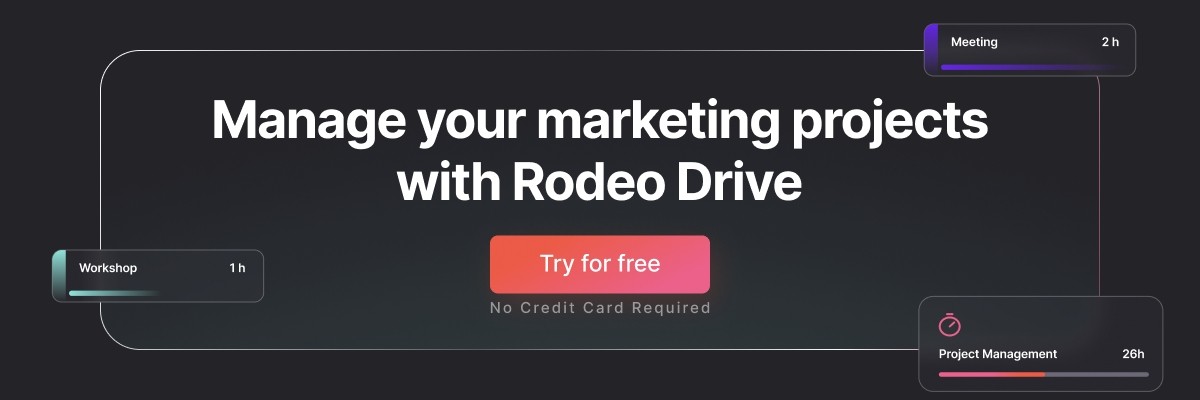How to Effectively Manage Marketing Campaigns
Whether or not you realize it, you interact with marketing campaigns daily. Some are so well-executed that you don’t even realize how persuasive they might be.
Such campaigns might include a series of eye-catching social media posts or an email newsletter that introduces you to a new product. Some campaigns seek to increase brand awareness, while others aim to increase sales.
If you are part of a marketing team, you might be wondering how you can successfully build and manage marketing campaigns that do just that. In this article, we’ll share everything you need to know.
What is marketing campaign management?
Marketing campaign management involves planning a specific marketing initiative and organizing and executing all of its various parts in order to see it through to success.
The goal of any marketing campaign is to capture the attention of a particular audience, get them to think about a problem they’re facing, and present your good or service as the best solution to meet their needs.
Marketing campaign management is an important part of project management in marketing. However, your potential customers will be seeing and interacting with your campaign messaging, so your delivery must be professional and on-brand. Other parts of marketing project management may be less customer-facing.
As we’ll get into, managing marketing campaigns requires a high degree of coordination and organization. Having a clear understanding of your responsibilities along with knowledge of the tools that can help you achieve success is key.
Try Rodeo Drive for free today
Different types of marketing campaigns
The type of campaign you choose will depend on your goals and objectives. For example, a new product launch might require an integrated branding, social media, and product marketing campaign, whereas a project to increase your website’s SEO performance might just require a simple content-based campaign.
But before you can decide what type of campaign is best for your needs, you have to familiarize yourself with the types of campaigns out there. Here’s an overview of the main types of marketing campaigns:
Branding campaign
What kinds of attributes do you want your customers to associate with your brand? Perhaps you want to be known as professional and reliable, or maybe you want your audience to think of you as unique and fun. A branding campaign is a strategy you use to define that identity in the mind of your target audience.
The goal of this type of campaign is to set yourself apart from competitors by showcasing how your brand is different from the rest. Maybe your company’s values or mission are unlike that of other products on the market. In building brand recognition, you heighten your brand awareness, ideally resulting in customer loyalty.
Content marketing campaign

Content marketing involves the creation of blog posts, podcasts, webinars, and ebooks that provide valuable information for your target audience. Many teams find blog content to be a powerful tool for driving website traffic. 16% of surveyed marketers reported blogs as their top-performing content.
In addition to providing your audience with useful information and resources, content marketing also helps attract new customers to your website through Search Engine Optimization (SEO). By targeting certain keywords in your blog posts, for example, your site will rank higher among Google search results.
Social media marketing campaign
While social media campaigns are a type of content-based marketing, it tends to focus more on relationship-building and organic interactions with your audience. Social media helps familiarize your audience with your brand without being too sales-heavy.
The most important thing for social media marketing is having a presence on the platforms where your target audience is most active. If you’re looking for young consumers, TikTok and Instagram might be your best bet, whereas Linkedin is crucial for a B2B product.
After all, 50% of people under 25 first look to social media when researching brands rather than using a search engine. This makes it a vital type of marketing that companies can’t afford to ignore.

Email marketing campaign
Email marketing is a strategy that many marketers use to get their message across to customers in a personalized way. With the right tools, email campaigns can also be used to target specific audience segments with messaging that’s tailored to their unique needs.
Many marketing teams use email campaigns to drive traffic to their blog or social media content. Most people check their email several times daily, making this a key strategy for getting your marketing message in front of the right consumers. 17% of marketers surveyed reported email marketing as their top-performing campaign type.
Product marketing campaign
If you’re looking to introduce, promote, or sell a brand-new product, you’ll need to plan and execute a product marketing campaign. As you might’ve guessed, these types of campaigns are centered around spreading market awareness of your product to generate demand and adoption.
Generally, these campaigns are product-led, meaning the product’s unique offerings and differentiated features play a large role in helping it stand out among the competition.
Paid media campaign
A paid media campaign includes any marketing efforts involving paid placements. Think pop-up ads, video ads, sponsored search results, or even just pay-per-click Google ads. The idea behind this type of campaign is that you’re purchasing the ability to advertise to a larger audience.
As you might imagine, sometimes the different types of campaigns blend together. For instance, social media campaigns might become paid media campaigns if you’re purchasing sponsored posts.
Related read: Mastering the Art of Digital Marketing Project Management
How to manage marketing campaigns successfully
Your marketing campaign is just one piece of your marketing project plan. But ultimately, the execution of your campaign determines how successful your marketing project will be, as your campaign involves delivering your marketing message to your actual customers.
Following these 8 steps will help you set your campaigns up for success:
1. Identify and define your target audience

The best way to get potential customers to pay attention to your marketing campaign is to familiarize yourself with their needs. After all, how can you pitch your product or service as a solution if you’re unfamiliar with their pain points?
That said, marketing campaigns may target just one of your ideal customer profiles (ICPs). For example, your product might be made for creatives in all industries, but for this campaign, you’re trying to target graphic designers specifically.
Decide who you want to target early on in the marketing campaign management process, as this will inform your strategy as you begin making headway on the campaign.
2. Create an audience segmentation strategy
Now that you have a better understanding of who you want to target, it’s time to create an audience segmentation strategy. This is a marketing tactic wherein you identify subgroups within your larger target audience which helps you better cater your campaign to your audience’s highly specific needs.
There are multiple ways to segment an audience, and using demographics or psychographics is a good place to start. As in the previous example, suppose your target audience is graphic designers. In that case, you could divide that group into freelancers, those working in-house for a creative agency, or graphic designers employed in a particular industry.
Each group of graphic designers will have different needs and might have more or less autonomy to purchase a new service to help streamline their workflows. Beyond this, differentiating between the different types of graphic designers helps your marketing team create campaign messaging that’s compelling enough to catch the attention of each group.
3. Set goals and milestones for your campaign
Goal-setting is a crucial part of setting your project up for success. In fact, a study at the Dominican University of California found that 76% of participants who wrote down their goals achieved them – a rate 33% higher than their peers who did not. And even still, 30% of marketers do not set specific goals.
But if setting actionable goals makes you more likely to achieve them, why not do so?
Your organization's larger goals can likely be used to frame your marketing campaign OKRs and milestones. For example, if your organization is aiming to onboard 2,500 new users by the end of the year, perhaps your marketing campaign goal is to onboard 500 new users who work as graphic designers.
Your milestones can be outfitted to monitor your progress depending on the types of campaigns you’re employing. If you’re using content marketing, for instance, a 25% increase in blog traffic over the last quarter could be a good indication you’re on the right track.
4. Build a campaign budget

It’s unlikely that you’ll have an unlimited budget to meet your objectives, which is why it’s important to know what your budget is and how you’ll allocate it early on in the marketing campaign management process.
In-house campaign managers might have more data at their disposal to help inform their campaign budgets, such as customer acquisition costs and the amount spent on past campaigns. Use whatever data you have to craft a budget that stakeholders are happy with and that’s also feasible.
Also read: How to Create a Project Budget Proposal [Free Template]
5. Pick the channels you’ll use
As we’ve already discussed, there are many different types of marketing campaigns out there, all with their own channels that can be used to reach different segments of your target audience.
While you might not be able to totally reach your target audience through just one channel, you’ll also want to avoid spreading your team too thin. Perhaps you’ll need a combination of channels – such as blog content supported by email newsletters – to reach the right audience.
Maybe you make your decision based on which channels are best performing, or which already have a strong makeup of your target audience. Don’t forget to consider your budget constraints when deciding what channels to target.
6. Establish a campaign schedule
Your marketing campaign management plans might not fit neatly into a timeline, but regardless, it’s important that marketing campaign managers create some sort of schedule for the marketing team to follow.
Again, what this schedule will look like depends on your channels. For social media or blog posts, you’ll want to decide your posting frequency and organize your workflows around that. Your campaign should also have some sort of end date by which point you can measure how it performed.
Related: Marketing Management Tasks to Prioritize for Successful Results
7. Create content and execute

It’s time to turn your plans into action and execute them at this step. This might include creating your blog posts, social media posts, or purchasing ads.
If your campaign has several moving parts, part of this step will involve dividing up work among team members to ensure everyone is contributing according to their skill set. A marketing campaign management tool can be immensely helpful in keeping your team organized, on task, and keeping tabs on everyone’s progress.
8. Monitor your campaign’s performance

Deploying your marketing campaign is one thing, but ensuring it’s successful is an entirely separate undertaking.
You’ll want to find ways to leverage analytics and data to understand whether your campaign was successful, that way you can make adjustments where needed.
For marketing teams working at an agency, you might also measure performance through employee productivity or the profitability of a project. A project management tool like Rodeo Drive can help you monitor these metrics.
Related read: Top 26 Marketing Project Management Software [2023 Review]
Marketing campaign management tools you need
So you have a plan for your marketing campaign – now what? Well, you’ll likely need to employ a few third-party tools to simplify your workflows when executing.
Here’s a list of 7 popular tools out there that can make it easier to see your campaigns through to completion:
Rodeo Project Management
Rodeo Drive is a project management software solution built to meet the needs of creatives. As an all-in-one tool, Rodeo Drive can support your marketing campaigns at every stage of development, starting with your budgeting processes all the way through to reporting.
Opting for a project management platform like Rodeo Drive helps your team have a centralized place to store project information. Marketing teams in particular will find the following features useful:
- Budgeting: You’ll begin all projects in Rodeo Drive by building a phase-based budget. Under each phase, you’ll outline the time activities and expenses required. Rodeo Drive will add up all of your phases to give you an overall budget estimate that you can send to your client for approval.
- Time tracking: Rodeo Drive makes time tracking easy by allowing you to record your hours in two ways – either by starting your live timer or by adding a timecard later if you forget. For marketing agencies, this makes it easier to track billable hours.
- Planning: Rodeo Drive’s planning feature helps you better manage your team’s workload and assign tasks according to what’s currently on everyone’s plate. That way, no one is left feeling overwhelmed.
Google Analytics 4
Google Analytics is a tool that marketing teams can use to measure traffic and engagement and collect data on your customer journey.
GA4 keeps you up to date on your website’s performance, where traffic is coming from, and allows you to build customizable dashboards so you can centralize data on the performance of your campaigns or activities.
Using a tool like GA4 also provides insights into how your ad spend is resulting in conversions, which is a useful metric for many teams.
CRM
CRM stands for Customer Relationship Management, and as you might guess, CRM systems are what you use to manage, engage, and acquire potential customers. Sales teams mostly use CRM systems, although having a CRM software tool is a necessary part of keeping Marketing Qualified Leads (MQLs) organized.
Hubspot and Salesforce are very popular CRM options. Hubspot’s capabilities go beyond the sales side of things, allowing marketing teams to also schedule social media posts and monitor engagement using the platform.
That said, if you only need a CRM tool that offers simple contact management, then Rodeo Drive should be sufficient. The all-in-one tool allows you to keep track of customer data, markup percentages, and rate cards all in one place.
Email Automation Tool
Marketing teams who are well-versed in email marketing campaigns and newsletters likely already understand why email automation tools are must-have software. Hubspot provides this type of email automation service, as does Mailchimp.
Email automation tools can automate your workflows, allowing you to properly time your campaigns and personalize them according to the intended recipient. They can also provide analytics on metrics like the open rate and which subject lines perform best during A/B testing.
Content Management System
A content management system – also known as a CMS – is a software tool used to manage your digital content materials. In other words, this is the software you use to create, edit, and produce landing pages on your website and blog.
Utilizing a CMS is particularly important for marketing teams with less technical knowledge of website infrastructure, as tools like WordPress, Websteen, and Webflow allow you to publish content with no technical knowledge.
Beyond this, CMS tools make team collaboration easy and allow you to assign roles and permissions on a per-user basis. Many also have features that can help improve and optimize your website’s SEO performance.
SEO tools
For content-based campaigns – especially ones involving the production of blog content – you’ll want to invest in an SEO tool to set your project up for success. Ahrefs, Semrush, and SurferSEO are all good places to start.
Tools like Ahrefs can be used for keyword research, tracking page rankings, site audits, and building your backlink profile. Without this information, you’ll be left in the dark about which keywords are worth creating content on and which are too competitive to rank for.
Related: 70 Useful ChatGPT Prompts for Marketing
Social Media Scheduling Platform
Teams working on social media marketing campaigns will want to have a social media scheduling and management platform in their back pocket. Hootsuite, for example, is a leading software solution that allows users to post and schedule social media content, monitor activity and results, and advertise across platforms.
Marketers who manage several different social media accounts will find it convenient to have access to every account in just one place.
Manage your marketing campaigns with Rodeo Drive

As you’ve probably gathered, marketing campaigns tend to involve a lot of moving pieces. But with the help of Rodeo Drive, campaign managers can ensure nothing slips through the cracks and that the project is progressing according to expected timelines.
Plus, all of Rodeo Drive’s features are interconnected, meaning you create invoices to send to clients based on the hours your team has recorded. Invoices are fully customizable, so you can add your branding and terms and conditions for an extra personalized touch.
And even better – you can use Rodeo Drive’s reporting feature to gain extra insights into your team’s performance. Rodeo Drive compiles your project data for reports on employee productivity, time registration, and project profitability. These metrics are essential in helping your team improve on your next campaign.
Why not see if Rodeo Drive is the right software for managing your marketing campaigns? Try it for free.








